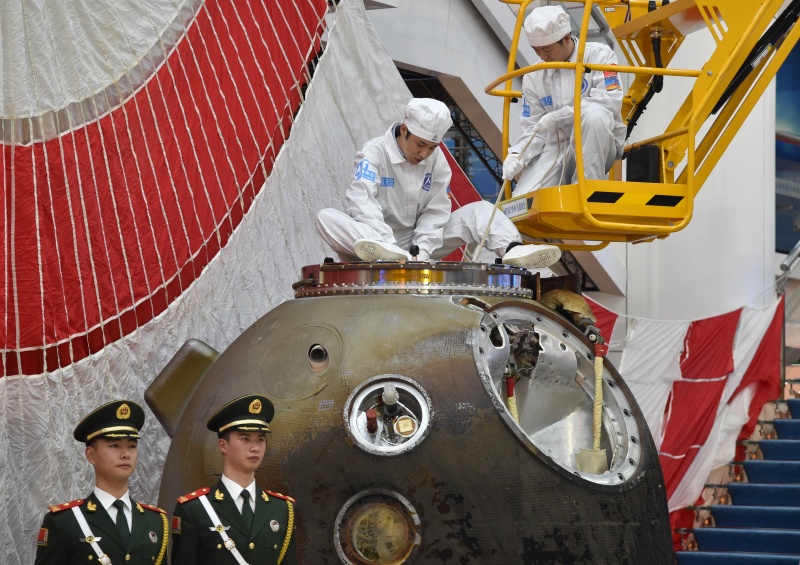Full coverage: China Tiangong-2 Space Lab Launch
Chinese scientists opened the Shenzhou-11 re-entry module in front of a crowd of media representatives. During its month-long space mission, astronauts Jing Haipeng and Chen Dong, carried out a series of experiments and now it's time to see the results.

Shenzhou-11 experiment samples removed from re-entry module
Opening the door to an unknown world. The Shenzhou-11 re-entry module didn't just bring back the two astronauts, but also over a dozen experiment samples gathered during its month-long stay in space, orbiting the Earth with the Tiangong-2 space lab.
Experiments included observing silkworms making cocoons in zero gravity and using cutting-edge quantum devices in the harsh conditions of outer space... Full details of the experiments conducted and their results will be revealed at a later date.
Yang Liwei, China's first man in space, attended the ceremony. In 2003, he spent 21 hours in orbit, making China the third country after the United States and Russia to send a person into space.
"When I was in space, I stayed in a very small re-entry module, just a few cubic meters. And that's where I lived and worked throughout the mission. But this time, the astronauts stayed in space for a record 33 days, and carried out a number of experiments. Over the past 13 years, China has made huge progress in manned space exploration," said Yang Liwei, China's first man in space.
Last Friday, the re-entry module successfully landed in the Gobi Desert region of Inner Mongolia.
After the two astronauts came out of the capsule in good health, it was transported back to Beijing.
So far, China has carried out 6 successful manned space missions.
With the completion of the Shenzhou-11 mission, the country has taken a significant step towards establishing a permanent space station, a project which is expected to be realised by 2022.















